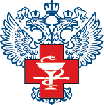 pirogov national medical surgical center
pirogov national medical surgical centernational center for researh and treatment of autoimmune diseases new jersey center for quality of life and health outcome research |
international symposium stem cell transplantation in multiple sclerosis: sharing the experience |
 |
 |
 |
 |
 |
 |
 |
 |
 |
 |
 |
 |
 |
 |
 |
| Feasibility of High-Dose Ñhemotherapy with Autologous Stem Cell Transplantation for Multiple Sclerosis |
|
International Symposium "Stem Cell Transplantation in Multiple Sclerosis", Key-Note Lectures Book, 2009, p. 92-95 E. Evdoshenko1, L. Zubarovskaya2, L. Zaslavsky2, A. Skorometz1, N. Totolyan1, J. Stankevich2, S. Alekseev2, E. Morozova2, B. Afanasyev2 1 Department of Neurology, St. Petersburg State Medical University of Roszdrav named after I.P. Pavlov, St. Petersburg, Russia Multiple sclerosis (MS) is a chronic immune-mediated disease of the central nervous system (CNS) producing multifocal neurological symptoms caused by nerve demyelination and progressive neurodegeneration. The pathological hallmark of MS is multiple demyelinated plaques (sharply defined area of demyelination) in the white mater and widely distributed areas of degeneration. The core process in MS is inflammatory, with T cells and their mediators triggering myelin injury, also oligodendrocyte/myelin damage is often mediated by autoantibody fixation with consequent complement activation. Therefore, MS is an autoimmune condition with complex pathogenesis involving cellular and humoral immune response activation. Presently four types of neural tissue injury are distinguished in MS. Two of them are caused by activation of cellular and humoral immune system compartments, others are characterized by degenerative changes in oligodendrocytes with primary or distal injury. These four types can occur at different stages of MS. The present concept of MS pathogenesis encompasses two basic mechanisms - autoimmune inflammation and neurodegenerative changes. Multiple studies and clinical observations showed the progressive decrease of brain tissue total volume in MS. The beginning of disease course is characterized by repeated episodes of inflammation with new contrast-accumulating T2 lesions revealed by MRI. However a considerable amount of recent data suggests the importance of degenerative changes at the earliest stages of disease. Today the pathogenesis of MS is considered as a complex process with inflammatory component only being a part of general process. Even small T2 lesions can be associated with general atrophy, though within the clinical course brain atrophy is not always associated with high EDSS scores. Recently much attention is given to focal atrophy at different stages of MS. Apart from direct cell damage the mechanism of inflammation can exert protective effect. The immune cells recruited to inflammatory foci produce growth factors, are able to delete myelin-associated molecules and can have a suppressive phenotype. Therefore there are still some controversies in the inflammatory concept to be resolved. MS patients receive treatment with Copaxone, Betaseron, Rebif-44, monoclonal antibodies and cytostatics. The most promising treatment of MS seems to be complex therapy aimed at inflammatory process suppression and neuroprotection. The aim of our study was to investigate the role of autologous HSCT in treatment of MS patients. The first autologous hematopoietic stem-cell transplantation (auto-HSCT) was performed in 2001. According to the protocol patients were divided into two groups based on the rate of disease progression. The patients with fast progression of MS formed the first group. In this group we consider a salvage high-dose chemotherapy with fludarabine-melphalan conditioning regimen and auto-HSCT. The patients with stable disease course were included into the second group; BEAM was used as a conditioning regimen in this group. Inclusion criteria:
Follow-up period varied from 2 months to 8 years:
Clinical parameters, immunological and radiological methods were used to evaluate treatment outcomes. We used EDSS scale, MSFC clinical outcome measure and relapse evaluation test. The methods of immunological status evaluation included: detection of oligoclonal bands (OCB) in plasma and cerebrospinal fluid (CSF), light chains detection in plasma and CSF, plasma and CSF T-cells cytofluorometry (CD 3+CD19-; CD3+CD8+; CD3+CD4+; CD3+CD19+; CD3-CD19+; CD3-ÑD20+; CD3-CD(16+56); CD3+CD(16+56); CD3+HLA-DR+; CD3-HLA-DR+; CD3+HLADR-; CD4+CD25+; ÑÂ19+ÑÂ27+ phenotypes). The following MRI protocol was used for CSN visualization:
Prior to auto-HSCT the patients received the following treatment: pulse therapy with steroids -90%, beta-IFN (Betaseron, Rebif, Avonex) -54%, mitoxantrone - 15%, Copaxone - 22%, intravenous IgG - 5%, no previous treatment - 5%. Outcomes: Clinical symptoms evaluation: two end-points for EDSS assessment were established (day 0 and 12 month after auto-SCT). Evident therapy effect was observed in three patients, with decrease of EDSS score from 6.5 to 1.5 in one patient and from 5.5 to 4.5 in two patents. 10 patients (43.4%) remained with stable EDSS score values for 12 months after auto-SCT. 4 patients (17.3%) experienced disease progression (increase of EDSS). One patient died of sepsis. MRI metrics examined included the number of Gd enhancing lesions, number of T2 lesions, total T2 lesions volume and atrophy evaluation (decrease of total brain volume; changes in the third ventricle diameter; atrophy of corpus callosum). In the 18-months period after auto-SCT the increase in T2 lesions volume was observed in 8% of cases, 20.4% of patients developed new T2 lesions, 12% patients had T1 contrast lesions. MRI signs of general brain atrophy were found in 95.6% of patients. We observed a certain discrepancy of MRI signs: while the volume T2 lesions decreased and no signs of systemic inflammation were observed, the atrophic changes continued to progress. Judging by MRI, auto-SCT can eliminate inflammatory, but not neurodegenerative component of MS. Immunology: We have performed cytofluorometry of serum and CSF immunocompetent cells population and evaluated the level of intrathecal IgG, as a highly specific marker of MS. Cell populations changes showed no definite pattern and can be hardly interpreted. No evident dynamics of intrathecal IgG level was observed. After ASCT 91.1% patients had constant intratecal synthesis of OCB. Only in 1 patient we revealed no signs of OCB synthesis in CSF and plasma. Early posttransplant period complications: infectious complications - 84%; hemorrhagic complications - 54%; serum sickness - 44%; neurological complications - 30%. Conclusions: Our results show the evident decrease of inflammatory changes and better disease control in MS patients treated with conventional chemotherapy or high-dose chemotherapy with auto-HSCT due to its immunosuppressive effect. However, more intensive therapy is associated with higher rate of complications and risk of mortality. Some questions remain unclear. It is still to be determined, whether the conventional regimens are able to control the disease course or more radical high-dose therapy leads to better long-term survival and disease control. The best timing for high-dose therapeutic intervention is also to be determined. As a whole, auto-HSCT is a promising method of MS treatment, but there are certain practical aspects to be developed:
|
|
© KMart |
(last update) 28/10/2009 |